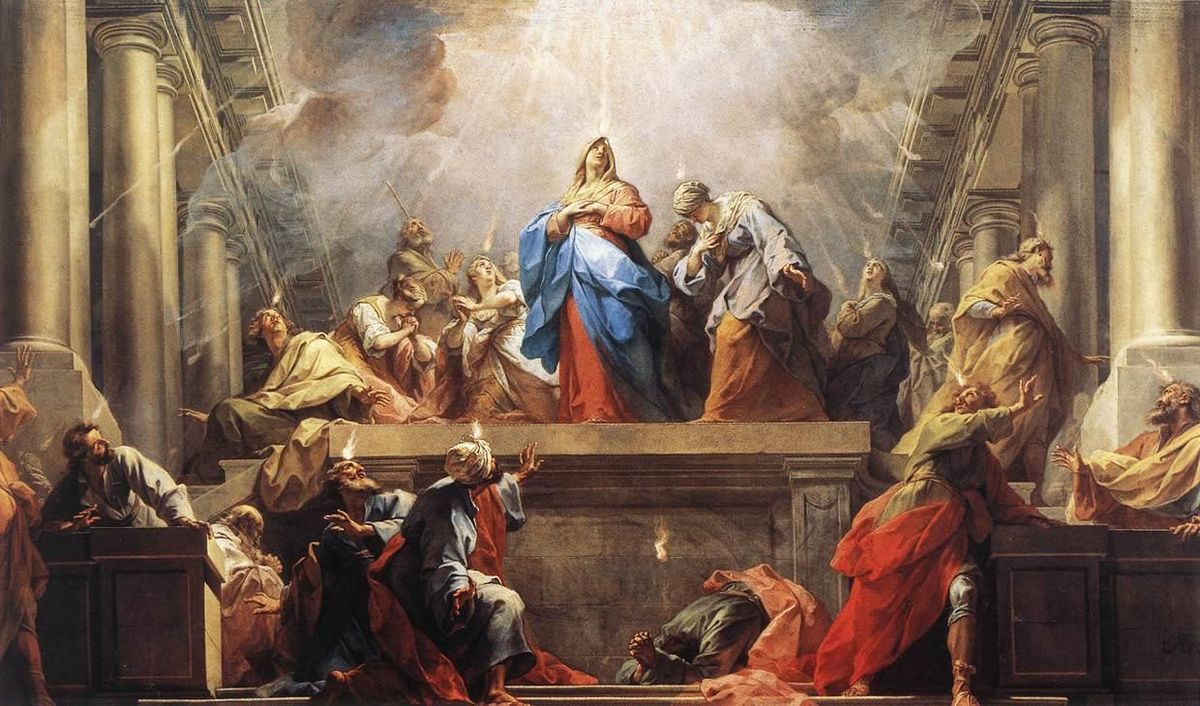19th May 2021
Mary, Mother of the Church
Adam Coates
Our last post in this series addressed Our Lady’s suffering as an essential part of her model discipleship. We saw how it united her discipleship to her Son’s mission of sorrow. It is not hard to imagine the height of Our Lady’s sorrow as being the witnessing of her beloved Son suffering and dying in agony upon the Cross, whilst being mocked and derided.
This is the moment to which the ministry of Jesus has been leading and this is a key moment within the life of Our Lady’s discipleship; it is the moment where she takes on a new role, the moment she is proclaimed Mother of the Church. As Christ hangs dying upon the Cross, He see His mother and St. John. Addressing His mother, He says, “Woman, behold your son”. Addressing St John, He says, “Behold your mother”. The passage then continues stating that “from that hour the disciple took her to his home” (John 19:26-27). St. John, the only Apostle present, represents the Church. This is more than simple a call for St. John to take Mary as his mother, it is a call for the whole Church to take Mary as its mother. St. John responds generously, and, to provide a more literal translation, Pope Benedict XVI explains that it can even be translated that St John takes Mary “into his inner-life setting”.
The Mother of Jesus is called to be taken into the hearts of all Christians. This motherhood, St. Paul VI writes, is a “new motherhood in the Spirit”. He continues, that in this “new motherhood … Mary embraces each and every one in the Church, and embraces each and every one through the Church”. As St. Paul VI makes clear, this is not a motherhood that ends with the end of the earthly life of either Mary or St. John but, rather, one that continues as a lived reality in the Church.
St. John Paul II further reinforces this fact. Pointing to the Mass, that awesome moment where Christ’s sacrifice on the Cross is re-presented, he writes that to revisit the Cross in this fashion is also to revisit this moment with Our Lady: in every celebration of the Mass, Our Lady is given anew to the Church. In St. John Paul’s own words, “Experiencing the memorial of Christ’s death in the Eucharist also means continually receiving this gift. It means accepting – like John – the one who is given to us anew as our Mother”. It means, St. John Paul continues, “putting ourselves at the school of his Mother and allowing her to accompany us”. Every celebration of the Mass renews the Church’s oneness with Christ and its motherhood with Mary. It is no accident that it is in the Mass, the “source and summit of the Christian life”, where Mary’s motherhood is renewed in the Church, for Mary’s role in Christ’s saving mission is essential; this relates right back to our very first post where Our Lady’s ‘yes’ makes possible Christ’s mission. Mary’s motherhood of the Church, where she serves as an example and teacher to all Christians, is central to the lived reality of the Christ’s Body the Church.
Mary was, as Pope Leo XIII writes, “in very truth, the Mother of the Church, the Teacher and Queen of the Apostles, to whom, besides, she confided no small part of the divine mysteries which she kept in her heart”. The Apostles would have looked to Mary as a model which to follow for, as we already know, she was the perfect disciple. That perfect discipleship was to lead to Mary’s Assumption into Heaven, the subject of our next post in the series.
Further reading
- Pope Leo XIII, Adiutricem, 6-7
- Catechism of the Catholic Church, 963-970
- St. John Paul II, Redemptoris Mater, 47
- St. John Paul II, Ecclesia de Eucharistia, 57
- Joseph Ratzinger, Jesus of Nazareth: Holy Week: From the Entrance into Jerusalem to the Resurrection, (Ignatius Press, 2011), p. 221

